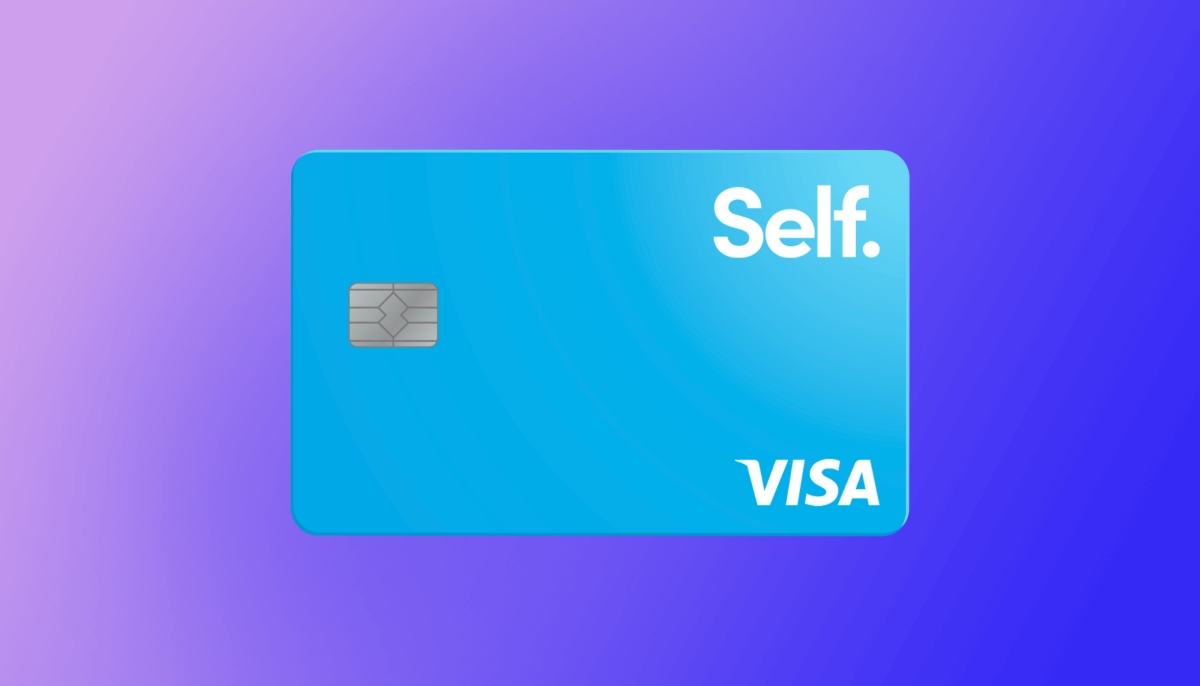Home>Finance>How Long Does It Take For A Student Loan Consolidation To Go Through


Finance
How Long Does It Take For A Student Loan Consolidation To Go Through
Published: October 20, 2023
Looking to consolidate your student loans? Find out how long it takes for a student loan consolidation to go through and streamline your finances.
(Many of the links in this article redirect to a specific reviewed product. Your purchase of these products through affiliate links helps to generate commission for LiveWell, at no extra cost. Learn more)
Table of Contents
Introduction
Student loan consolidation is a strategic financial move that allows borrowers to combine multiple student loans into one, with the goal of simplifying repayment and potentially reducing interest rates. If you have multiple student loans with varying interest rates and repayment terms, consolidating them can provide you with a more streamlined and manageable repayment plan.
For many individuals burdened with student loan debt, the process of consolidation can bring much-needed relief and peace of mind. This process involves merging all your loans into a single new loan, typically with a fixed interest rate and a longer repayment term. This not only reduces the hassle of managing multiple loan accounts but also allows you to potentially save money over time.
While the idea of student loan consolidation may seem enticing, it’s important to have a comprehensive understanding of how the process works and what to expect. In this article, we will guide you through the various stages involved in consolidating student loans, from application to disbursement of funds. By the end, you will have a clearer understanding of the timeline and steps involved in the consolidation process.
Understanding Student Loan Consolidation
Student loan consolidation is a financial strategy that allows borrowers to combine multiple student loans into a single loan with a new repayment term and interest rate. It can simplify the repayment process by eliminating the need to manage multiple loan accounts and potentially reduce monthly payments. Here are some key points to understand:
- Consolidation vs. Refinancing: It’s important to distinguish between consolidation and refinancing. While consolidation combines multiple loans into one, refinancing involves replacing existing loans with a new loan, often with a lower interest rate. Consolidation is typically done through a federal loan consolidation program, while refinancing is offered by private lenders.
- Eligibility for Consolidation: Most federal student loans are eligible for consolidation, including Direct Subsidized and Unsubsidized Loans, PLUS Loans, and Perkins Loans. However, private student loans are generally not eligible for federal consolidation programs.
- Interest Rates: When consolidating federal student loans, the new interest rate is determined by taking the weighted average of the rates on the loans being consolidated, rounded up to the nearest one-eighth of a percent. This means that the consolidated rate may be slightly higher than the original rates.
- Repayment Terms: Consolidating loans can potentially extend the repayment term, resulting in lower monthly payments. However, keep in mind that a longer term means paying more interest over time.
- Federal Loan Consolidation Programs: The U.S. Department of Education offers various consolidation programs, including the Direct Consolidation Loan program. This program allows borrowers to combine multiple federal loans into a single loan, with the option to choose from several repayment plans.
- Benefits of Consolidation: Consolidating your student loans can provide several advantages. It simplifies the repayment process by having only one monthly payment, potentially lowers monthly payments, offers access to additional repayment plans, such as income-driven options, and ensures eligibility for federal loan benefits like deferment and loan forgiveness programs.
Before deciding to consolidate your student loans, carefully consider the pros and cons. While consolidation can be beneficial for some borrowers, it may not be the best option for everyone. It’s essential to assess your individual financial situation and goals to determine if consolidation aligns with your needs.
The Application Process
Applying for student loan consolidation involves a straightforward process that can be completed online. Here are the steps to follow:
- Gather necessary information: Before starting the application, gather important information about your existing student loans, such as loan account numbers, balances, and interest rates. You will also need your Social Security number, driver’s license, and other personal details.
- Choose a consolidation program: Determine which consolidation program is best for you. If you have federal student loans, the Direct Consolidation Loan program offered by the U.S. Department of Education is a popular choice. Private student loans can often be consolidated through private lenders.
- Visit the official website: Go to the official website of the consolidation program you have chosen. For federal loans, visit the Federal Student Aid website (studentaid.gov) and navigate to the Consolidate Your Loans section. For private loans, visit the website of the private lender you wish to work with.
- Complete the application: Fill out the required information on the online application form. You will provide details about yourself, your loans, and your financial situation. Be sure to double-check the accuracy of the information before submitting the application.
- Review and sign: After filling out the application, carefully review the terms and conditions of the consolidation loan. Make sure you understand the new interest rate, repayment term, and any fees associated with the consolidation. If you agree to the terms, sign the application electronically.
- Submit and wait for verification: Once you submit the application, it will go through a verification process to confirm the information provided. This may involve verifying your loan details with the existing loan servicers.
- Receive consolidation agreement: If your application is approved, you will receive a consolidation agreement outlining the details of the new loan. Review the agreement thoroughly, paying attention to the terms and repayment schedule.
- Choose a repayment plan: With federal consolidation loans, you have the option to select a repayment plan that suits your financial situation. There are various plans available, including standard repayment, income-based repayment, and extended repayment. Consider your income, expenses, and financial goals when choosing a plan.
- Start making payments: Once the consolidation loan is finalized, you will begin making payments according to the agreed-upon repayment schedule. Note the due date and payment amount to ensure timely repayment.
Keep in mind that the application process and timeline may vary depending on the consolidation program and the types of loans being consolidated. It’s important to monitor your application status and communicate with the consolidation lender or servicer if you have any questions or concerns.
Verification and Approval
Once you have submitted your application for student loan consolidation, it goes through a verification and approval process. This process ensures that the information provided is accurate and that you meet the eligibility criteria for consolidation. Here is what you can expect during the verification and approval phase:
- Verification of loan information: During the initial review, the consolidation lender or servicer will verify the details of your existing loans. This includes confirming loan balances, interest rates, and loan statuses with the loan servicers of your original loans.
- Verification of financial information: In addition to loan verification, the consolidation lender may also verify your financial information, such as your income and employment status. This verification helps determine your eligibility for certain repayment plans or benefits.
- Credit check: Some consolidation programs, especially those offered by private lenders, may require a credit check as part of the approval process. A good credit score can increase your chances of approval and may even result in more favorable interest rates.
- Approval decision: Based on the verification process and review of your application, the consolidation lender or servicer will make a decision regarding your consolidation request. If approved, you will receive an approval notification, typically in the form of a consolidation agreement.
- Review the consolidation agreement: It is crucial to carefully review the consolidation agreement once you receive it. The agreement will outline the terms of the new loan, including the interest rate, repayment term, and any associated fees. Take the time to understand these terms and ensure they align with your financial goals and capabilities.
- Acceptance and implementation: If you agree with the terms provided in the consolidation agreement, you will need to sign and return it to the lender or servicer. This acceptance signifies your commitment to the new loan terms. Once the consolidation agreement is accepted, the consolidation process is complete, and you can start making payments on your consolidated loan.
The verification and approval process typically takes a few weeks to complete, although the specific timeline may vary depending on the consolidation program and the lender or servicer involved. During this time, it is essential to stay in touch with the consolidation lender or servicer, promptly responding to any requests for additional information or documentation.
Remember, the approval of your consolidation application is not guaranteed. Eligibility requirements, such as having a minimum loan amount or meeting income criteria, may vary depending on the consolidation program. Properly submitting all required documents and providing accurate information increases your chances of approval and expedites the process.
Repayment Plans
When you consolidate your student loans, you have the opportunity to choose a repayment plan that aligns with your financial situation and goals. Repayment plans determine the amount you will pay each month and the length of time it will take to repay your consolidated loan. Here are some common repayment plans to consider:
- Standard Repayment Plan: This plan provides a fixed monthly payment amount over a set repayment period, usually 10 years. It is suitable for borrowers who can afford higher monthly payments and want to pay off their loan faster while minimizing interest expenses.
- Graduated Repayment Plan: With this plan, your monthly payments start off lower and gradually increase over time, typically every two years. This plan is beneficial for borrowers who anticipate their income to increase steadily over time. It allows for more manageable payments initially, with the expectation of higher payments in the future.
- Extended Repayment Plan: If you have a large amount of student loan debt, an extended repayment plan may be an option. It extends the repayment term beyond the standard 10 years, typically up to 25 years. This results in lower monthly payments but increases the total amount of interest paid over the life of the loan.
- Income-Based Repayment (IBR) Plan: This plan sets your monthly payments based on a percentage of your discretionary income. The specific percentage can vary depending on when you took out your loans. IBR plans are designed to ensure affordability for borrowers with lower incomes and can be particularly beneficial if you’re experiencing financial hardship.
- Pay As You Earn (PAYE) Repayment Plan: PAYE plans, similar to IBR plans, base your monthly payments on a percentage of your discretionary income. However, PAYE plans typically cap your payments at 10% of your income and offer loan forgiveness after 20 years of on-time payments.
- Revised Pay As You Earn (REPAYE) Repayment Plan: REPAYE plans are similar to PAYE plans but do not have income restrictions. They calculate your monthly payments based on 10% of your discretionary income and offer forgiveness after 20 or 25 years, depending on whether you borrowed for undergraduate or graduate study.
It’s important to carefully evaluate and choose a repayment plan that suits your financial situation. Consider factors such as your income, expenses, and long-term financial goals. Keep in mind that some repayment plans, especially income-driven plans, may require you to recertify your income and family size annually.
If you experience difficulty making your monthly payments, contact the consolidation lender or servicer to discuss options such as deferment, forbearance, or exploring alternative repayment plans. It’s important to stay proactive and communicate any financial challenges you may encounter.
Remember, each repayment plan has its own advantages and considerations. Research and compare the available options before making a decision. Canvassing the various repayment plans will aid in choosing the one that best fits your financial circumstances and ensures successful repayment of your consolidated student loan.
Disbursement of Funds
After the approval of your student loan consolidation, the disbursement of funds occurs through a specific process. Here’s what you need to know about the disbursement of funds:
1. Notification: Once the consolidation is finalized, you will receive a notification confirming the approval and providing details about the disbursement of funds. This notification may be sent by email or mail, depending on the communication preferences you provided during the application process.
2. Loan Servicer: The consolidation lender will assign a loan servicer to manage your consolidated loan. This loan servicer will be responsible for handling payments, providing information, and addressing any questions or concerns you may have regarding your consolidated loan.
3. Loan Servicer Transition: In some cases, the loan servicer for your original loans may change as part of the consolidation process. The consolidation lender will communicate any such transitions, providing information about the new loan servicer and how to contact them.
4. Payment Instructions: The loan servicer will provide instructions on how to make payments towards your consolidated loan. This may include details on payment methods, due dates, and online account access. Make sure to familiarize yourself with these instructions to ensure timely payment.
5. Loan Disbursement: Once your consolidated loan is ready for disbursement, the loan servicer will arrange for the funds to be transferred. The disbursement process can vary depending on the consolidation program and servicer. In most cases, the funds will be sent directly to your loan servicers to pay off your original loans.
6. Loan Closure: As the funds are disbursed to your original loan servicers, your individual student loan accounts will be closed. You will no longer have separate loan accounts for each of your original loans.
7. Communication with Loan Servicer: It’s essential to maintain open communication with your loan servicer throughout the disbursement process. If you have any questions or concerns about the disbursement or repayment, reach out to your loan servicer for assistance.
8. Start of Repayment: Following the disbursement of funds, you will begin making monthly payments according to the repayment plan you selected. Ensure that you have the necessary funds available to meet your payment obligations and avoid any potential late fees or penalties.
Remember to keep track of your consolidated loan, maintain accurate records of payments, and monitor your loan account through the loan servicer’s provided online portal or statements. If you encounter any issues or changes in your financial situation, contact your loan servicer for guidance on potential payment options or modifications to your repayment plan.
By understanding the disbursement process and maintaining regular communication with your loan servicer, you can successfully navigate the repayment phase of your consolidated student loan.
Conclusion
Student loan consolidation offers individuals the opportunity to simplify their repayment process and potentially save money on interest. Understanding the student loan consolidation process is crucial to make informed decisions about your financial future. In this article, we discussed the key aspects of student loan consolidation, including the application process, verification and approval, repayment plans, and the disbursement of funds.
Consolidating your student loans can bring a range of benefits, such as having a single monthly payment, potentially lowering your monthly payments, and providing access to additional repayment plans. However, it’s important to carefully weigh the advantages and considerations before proceeding with consolidation. Evaluate your financial situation, take note of any eligibility requirements, and choose a repayment plan that aligns with your long-term goals.
During the application process, gather all necessary information about your existing loans and choose the consolidation program that suits your needs. Complete the online application form accurately, review the consolidation agreement thoroughly, and sign it to finalize the consolidation process.
Once your consolidation application is approved, the loan servicer will disburse the funds to pay off your original loans. You will then begin making payments according to the terms of the new loan and the repayment plan you selected. Regular communication with your loan servicer is vital to address any questions or concerns that may arise during the repayment process.
Remember, student loan consolidation is not the right choice for everyone. It’s important to carefully assess your individual financial situation and goals before proceeding. Consider consulting with a financial advisor or student loan expert who can provide personalized guidance.
By understanding the steps involved in student loan consolidation and exploring the available repayment plans, you can effectively manage your student loan debt and work towards a more secure financial future. Take control of your student loans today and embark on a path towards financial freedom.














